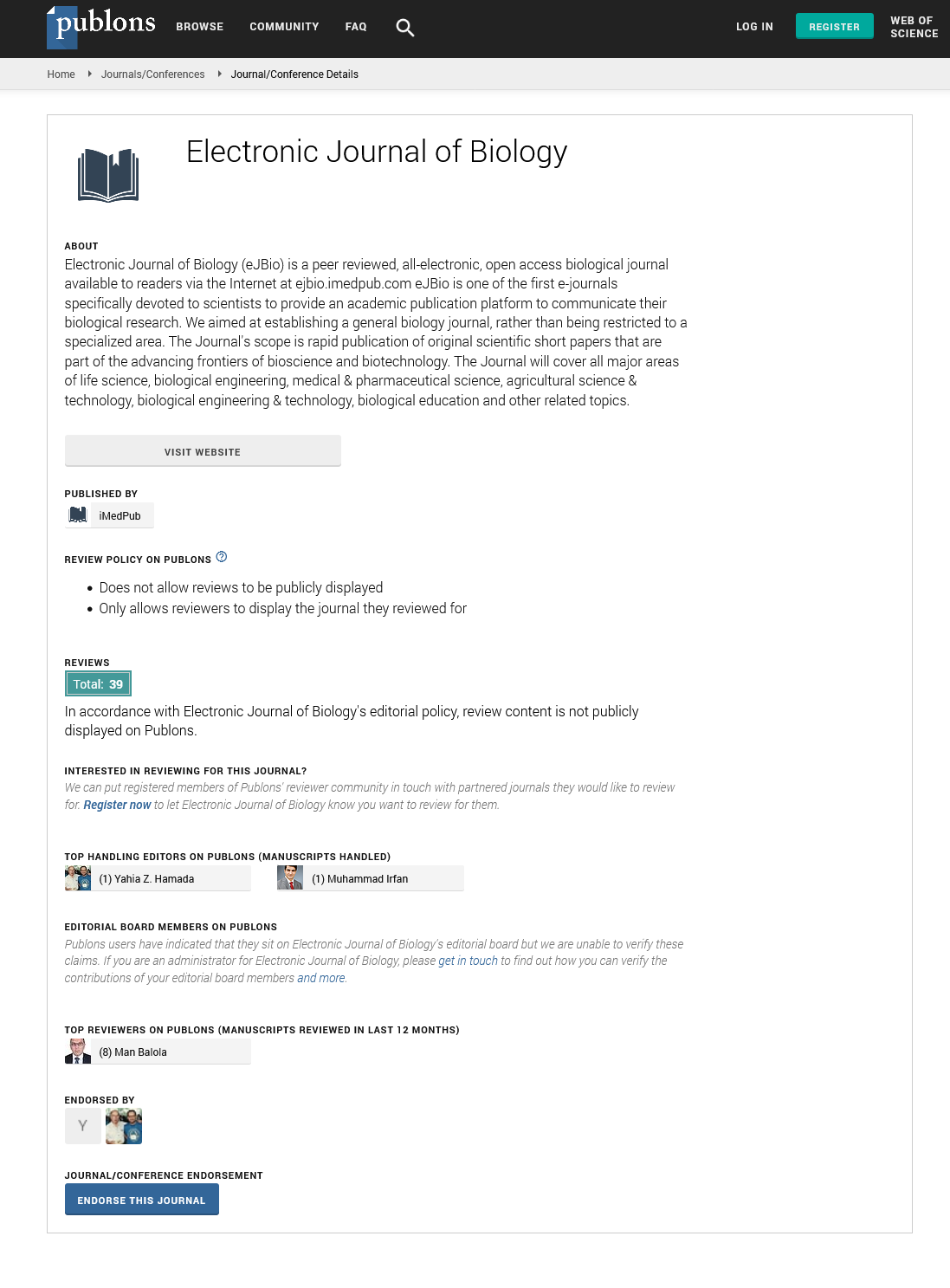Abstract
How Far is ITS2 Reliable as a Phylogenetic Marker for the Mosquito genera?
The present study provides substantial evidence of variation among the ITS2 regions of the sample species both at sequence as well as RNA secondary structure level. A bioinformatics approach was exploited to reveal the mystery of conservation and variation in ITS2 in mosquito genera. Multiple sequence alignment revealed conservation within the species and across species. Dimer frequency of all the species showed variance in conservation according to the type of dimer. RNA secondary structures were generated for all the species. To obtain a deep insight into structural similarity and divergence, parameters like structural energy, number of stems, G-C, A-U, G-U pairings were calculated. Out of five types of loops derived by Sribo Program, hairpin and exterior loops were found to be fairly more conserved rather than interior, bulge and multi loops. Tandem repeats with high degree of variation were observed in these specific regions. The unexpected observation was the striking proximity of Aedes longfilamentus and Anopheles culicifacies in the phylogenetic tree where they shared same clade instead of other species of Aedes genera. This finding is quite appealing and intriguing being contrary to the expected outcome and requires further rigorous investigation. These results indicate towards the major variable and conserved regions as well as the stretches of sequences and structural parts where selection pressure varies during ribosome biogenesis.
Author(s): Amit Kumar Banerjee, Neelima Arora, Upadhyayula S.N. Murty
Abstract | Full-Text | PDF
Share this

Google scholar citation report
Citations : 5001
Electronic Journal of Biology received 5001 citations as per google scholar report
Electronic Journal of Biology peer review process verified at publons
Abstracted/Indexed in
- Google Scholar
- China National Knowledge Infrastructure (CNKI)
- CiteFactor
- Electronic Journals Library
- Zoological Records
- WorldCat
- Proquest Summons
- Publons
- MIAR
- Openaccessarticles.com
- Secret Search Engine Labs
Open Access Journals
- Aquaculture & Veterinary Science
- Chemistry & Chemical Sciences
- Clinical Sciences
- Engineering
- General Science
- Genetics & Molecular Biology
- Health Care & Nursing
- Immunology & Microbiology
- Materials Science
- Mathematics & Physics
- Medical Sciences
- Neurology & Psychiatry
- Oncology & Cancer Science
- Pharmaceutical Sciences


